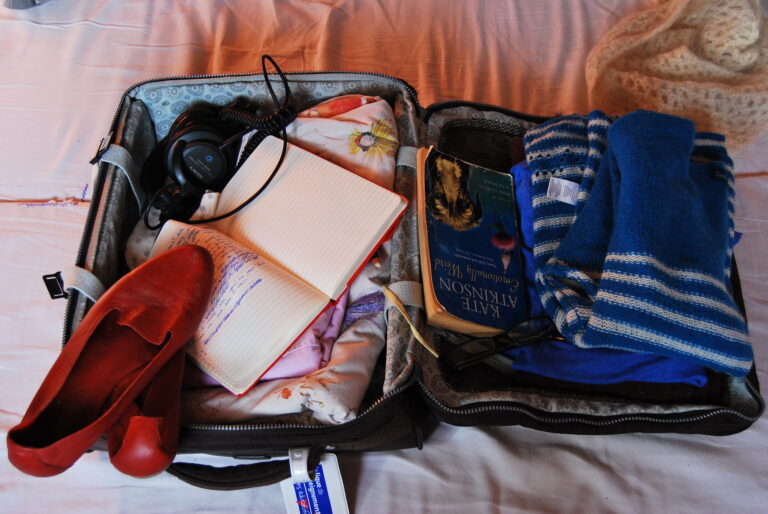As winter approaches, many of us start dreaming of snowy landscapes, cozy fires, and adventurous outings. Whether you’re planning a ski trip in the mountains, a holiday getaway to a snowy destination, or a visit to family and friends, packing efficiently for two weeks of winter travel can be a daunting task. With the right preparation, you can ensure that you have everything you need without overpacking. This comprehensive guide will provide you with a detailed 2-week winter packing list, tips for organizing your luggage, and essential items to keep you warm and comfortable during your trip.
Why Planning Your Winter Packing List is Important
Winter travel requires specific clothing and gear to cope with the cold weather and snow. A well-planned packing list can:
- Ensure Comfort: Staying warm and dry is crucial to enjoying your trip.
- Save Space: Efficient packing allows you to use your luggage space wisely.
- Avoid Overpacking: Reducing unnecessary items saves weight and hassle.
- Be Prepared for Any Situation: Having the right items on hand can make your trip smoother.
Understanding the Essentials for Winter Travel
Before diving into the packing list, it’s essential to understand what types of activities you may engage in during your trip. Will you be skiing, hiking, or simply exploring a winter city? Each activity may require different gear and clothing. Here’s a breakdown of categories to consider:
- Clothing: Layering is key in winter to adjust to varying temperatures.
- Footwear: Warm, waterproof, and sturdy shoes are vital.
- Accessories: Hats, gloves, scarves, and other accessories can make a big difference.
- Gear: If you’re participating in winter sports, specific gear is necessary.
Your 2-Week Winter Packing List
Clothing
Layering is crucial for winter wear. Aim for three main layers: base, middle, and outer.
Base Layer
- Thermal tops (2-3): Lightweight, moisture-wicking materials.
- Thermal bottoms (2-3): Long underwear for warmth.
- Socks (5-7 pairs): Wool or synthetic blend for warmth and moisture control.
Middle Layer
- Fleece or wool sweaters (2-3): Provides insulation without bulk.
- Long-sleeve shirts (3-5): For additional warmth and comfort.
Outer Layer
- Winter coat (1): Insulated, waterproof jacket to shield against cold and snow.
- Waterproof pants (1): Essential for snow activities.
- Casual pants (2-3): Jeans or warm trousers for everyday wear.
Footwear
- Waterproof winter boots (1 pair): Insulated and sturdy for snow and slush.
- Casual shoes (1 pair): For indoor and less rigorous activities.
- Slippers (optional): Comfortable footwear for indoors.
Accessories
- Warm hat (1-2): Covers ears for extra warmth.
- Scarves (1-2): Protects neck from wind and cold.
- Gloves or mittens (2 pairs): Insulated and waterproof for outdoor activities.
- Sunglasses or goggles: Protects eyes from glare off the snow.
Toiletries and Personal Care
- Travel-sized shampoo and conditioner: Keep your hair healthy despite the cold.
- Moisturizer: Prevents dry skin from cold air.
- Lip balm: Protects lips from chapping.
- Sunscreen: UV rays can be strong, even in winter.
Gear and Equipment
Depending on your activities, pack the following:
- Ski gear (if applicable):
- Skis or snowboard (if not renting)
- Ski poles
- Helmet
- Hiking gear (if applicable):
- Trekking poles
- Waterproof backpack
- Miscellaneous gear:
- Camera or GoPro for capturing winter memories.
- Travel guidebook or maps for exploring.
Electronics
- Smartphone and charger: Essential for navigation and communication.
- Laptop or tablet (optional): For entertainment or work.
- Portable charger: Keeps your devices powered during outings.
Miscellaneous Items
- Reusable water bottle: Stay hydrated.
- Snacks: Trail mix or energy bars for on-the-go nourishment.
- Travel pillow: For comfort during your journey.
- Laundry bag: Keep dirty clothes separate.
Packing Tips for Winter Travel
Organize Your Luggage
- Use Packing Cubes: They help keep clothing organized and easy to find.
- Roll Your Clothes: Saves space and reduces wrinkles.
- Layer Wisely: Place heavier items at the bottom of your suitcase.
Check the Weather
Always check the forecast for your destination before you leave. This will help you make last-minute adjustments to your packing list.
Prepare for the Journey
- Wear your heaviest items: If possible, wear your winter coat and boots during travel to save space in your luggage.
- Have a carry-on: Pack essentials, including a change of clothes, in case of delays or lost luggage.
Conclusion
Packing for a two-week winter trip doesn’t have to be overwhelming. By planning ahead and following a well-structured packing list, you can ensure that you have everything you need for a comfortable and enjoyable experience. Remember to prioritize layering, choose the right footwear, and consider your specific activities. With this guide, you’ll be well-prepared for whatever winter adventures come your way.
Whether you’re carving down snowy slopes or sipping hot cocoa by the fire, the right packing will make all the difference in your winter journey. Happy travels!

